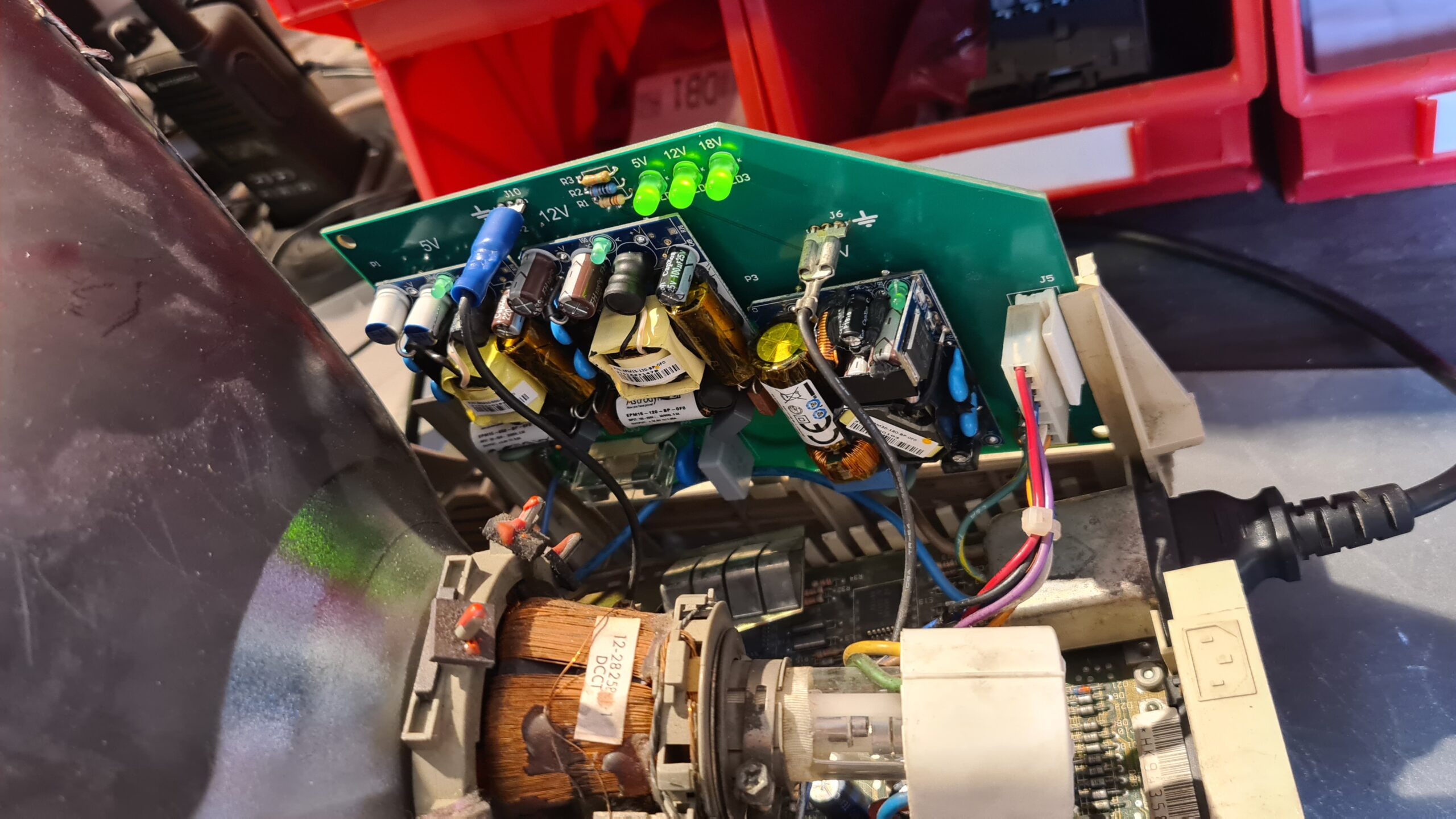Overview
This little project solved the annoying re-setting of the time and date and console language preference every time I powered up my MicroVAX II’s (and III’s).
The old 180mAH NiCad battery pack (DEC p/n 12-19245-01) is hard to come by, slow to charge, and memory effect, ugly leaks and old age made it useless on all my MicroVAX computers.
Please note: this revision A design does not offer protection against battery over-discharge. See the newer Revision B post.
Description
I have designed a circuit board that plugs piggyback into an the existing SLU (serial line unit). It uses a 14500-type Lithium Ion 3.7V AA-size rechargeable battery, in place of the original NiCad battery pack. The charging is managed by a MCP73833 IC.
The charge current is about 300mA, so you can have a battery fully charged in a couple of hours, ready for many months of battery backup.
The measured current consumption of the TOY clock circuitry (based on the now extinct MC146818) is between 50uA and 120uA. Thus, if you believe the battery manufacturers’ 1200 mAh rating, you can get anywhere from 415 to 1000 days of battery backup on a fully charged battery. The original battery, at best, could only give 2 or maybe 3 months on a full charge. I have never seen one last more than a couple of weeks though.
Building the board
See schematic and BOM at the bottom of this post for manufacturing flies and required parts. If your SMD soldering skills are poor, do NOT try to solder the MCP73833 yourself.
To avoid the MCP73833 sometimes erroneously going into test mode, I have replaced R6 with a 10uF capacitor, and given up on the optional NTC thermistor – it is not necessary anyway as the charge current is low and there is no battery pack temperature to measure as such.
Instructions
Assembly is simple and straightforward, and is detailed in the photos below. Remove the old battery and plastic battery holder from the battery backup unit (BBU). BBU (also SLU) part numbers are 5416744-0-0, 5016743-01, and perhaps more. Remove three of the 6/32″ screws. Position three hex spacers (p/n 4533-632-AL-7) as in the photo, plug the piggyback PCB into place, fasten using the three 6/32″ screws, re- connect the flat cables and you are done.
A couple of my SLUs were kept in place using long-ish 6/32″ screws. You’ll need short ones, otherwise they won’t fit into the hex spacers.
The circuit can be used with KA650 consoles as well. This is the reason there are two male headers available on my PCB instead of just one. You will need a 1:1 20-conductor flat cable. Connect the original console bulkhead flat cable to the battery PCB, and use the 1:1 flat cable to connect the battery PCB to the KA650/655 CPU board. Both male headers have identical connections, it does not matter which cable goes where. Fixing and protecting the battery PCB is no longer trivial as in the KA630 SLU, so you are on your own on this one.
More Features
There is a vacant 5-pin 0.1″ header on the PCB, to which you can connect external LEDs instead of the on-board ones, to show the charge state as reported by the charger IC.
Warning
Do not be tempted to use a standard, alkaline or other 1.5V AA battery in this board. It will end in tears. Only use a 3.7V Lithium-Ion rechargeable.
















All project files have been placed on github.



